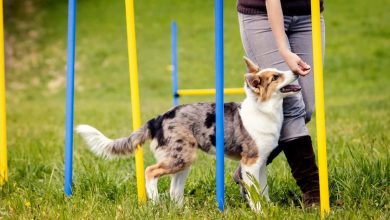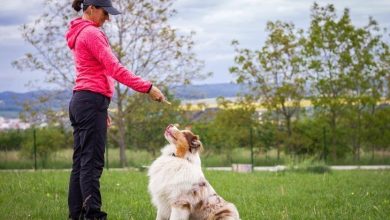Should You Use Clicker Training or Verbal Commands

When it comes to training your furry friend, choosing the right method can make all the difference in building a strong, positive relationship. Whether you’re a new pet owner or a seasoned animal enthusiast, understanding the benefits and drawbacks of various training techniques is crucial. Two popular methods that often spark debate are clicker training and verbal commands. Each approach has its own unique set of advantages, and deciding which one to use can be a bit overwhelming. In this article, we’ll explore the ins and outs of clicker training and verbal commands, providing you with the insights you need to make an informed decision that best suits you and your pet’s needs. Let’s dive into the world of pet training and discover which method might be the perfect fit for your four-legged companion!
Understanding Clicker Training and Verbal Commands
Clicker training and verbal commands are two popular methods for teaching pets new behaviors, each with its own set of benefits. Clicker training involves using a small device that makes a distinct sound, often paired with treats, to signal to your pet that they have performed the desired behavior. This method relies on the principles of positive reinforcement and can be incredibly effective for teaching complex tasks or refining specific actions. The clear, consistent sound of the clicker can help eliminate confusion for your pet, making it easier for them to understand exactly which behavior is being rewarded.
On the other hand, verbal commands offer a more natural and flexible way to communicate with your pet. Many trainers and pet owners prefer this method for its simplicity and the personal touch it adds to training sessions. By using distinct words or phrases, you can guide your pet through a variety of tasks without the need for additional tools. Verbal commands can be especially useful in everyday situations where carrying a clicker might not be practical. When using verbal commands, consistency is key. Make sure to use the same words and tone each time to reinforce the behavior effectively.
- Advantages of Clicker Training:
- Precise and consistent feedback
- Effective for complex behaviors
- Advantages of Verbal Commands:
- Natural and intuitive
- Convenient in various settings
The Benefits and Drawbacks of Clicker Training
Clicker training, a popular method in animal behavior modification, offers a range of benefits that can enhance your training experience. One of the primary advantages is its precision. The click sound marks the exact moment a desired behavior is performed, providing clear feedback to your pet. This clarity can accelerate learning and make training sessions more efficient. Additionally, clicker training is known for being a positive reinforcement technique, promoting a bond of trust and cooperation between you and your pet. By consistently rewarding good behavior, it encourages your furry friend to repeat those actions, making the training process enjoyable for both parties.
However, clicker training is not without its drawbacks. It requires the handler to have a clicker on hand at all times, which can be inconvenient in spontaneous situations. Furthermore, the initial learning curve for both the pet and the owner can be steep, as it demands precise timing and coordination. Some animals might also become over-reliant on the clicker, making it challenging to transition to verbal commands or other cues. Despite these challenges, with patience and practice, many find that the benefits outweigh the drawbacks, making it a worthwhile consideration in the realm of animal training.

Maximizing Success with Verbal Commands
Unlocking the full potential of verbal commands can transform your training sessions into a rewarding experience for both you and your pet. Verbal commands are not only about the words themselves but also about the tone, consistency, and timing of their delivery. Here are some essential tips to help you maximize success:
- Consistency is Key: Use the same words and intonation for each command. This helps your pet associate the specific sound with the desired action.
- Clear and Concise: Keep your commands short and simple. Use single words like “sit,” “stay,” or “come” to avoid confusion.
- Positive Reinforcement: Pair verbal commands with praise or treats to reinforce good behavior. This encourages your pet to respond promptly and enthusiastically.
- Practice Patience: Allow time for your pet to process and respond to the command. Repeated practice will enhance their understanding and response time.
By focusing on these elements, you can create a strong verbal communication channel with your pet, enhancing your bond and ensuring more effective training sessions. Remember, the key to successful verbal commands lies in patience, practice, and positive reinforcement.

Choosing the Best Training Method for Your Pet
When deciding on a training method for your furry friend, it’s essential to consider the unique benefits each approach offers. Clicker training is a popular choice for many pet owners, as it provides a clear and consistent signal to your pet that they’ve performed the desired behavior. This method involves using a small device that makes a distinct clicking sound, followed by a treat or reward. The clicker serves as a positive reinforcement tool that can accelerate learning by helping your pet associate specific actions with positive outcomes.
On the other hand, verbal commands can be just as effective, especially if you prefer a more natural interaction with your pet. This method involves using spoken words or phrases to signal desired behaviors, which can be advantageous if you want to communicate with your pet in various situations where a clicker might not be practical. Consider the following when choosing between the two methods:
- Pet’s responsiveness: Does your pet react better to sounds or words?
- Consistency: Are you able to maintain a consistent tone and wording for verbal commands?
- Convenience: Do you often find yourself without a clicker, or is it easy for you to carry one?
Ultimately, the choice between clicker training and verbal commands depends on your lifestyle and your pet’s learning preferences. You might even find that a combination of both methods works best for you and your furry companion!



